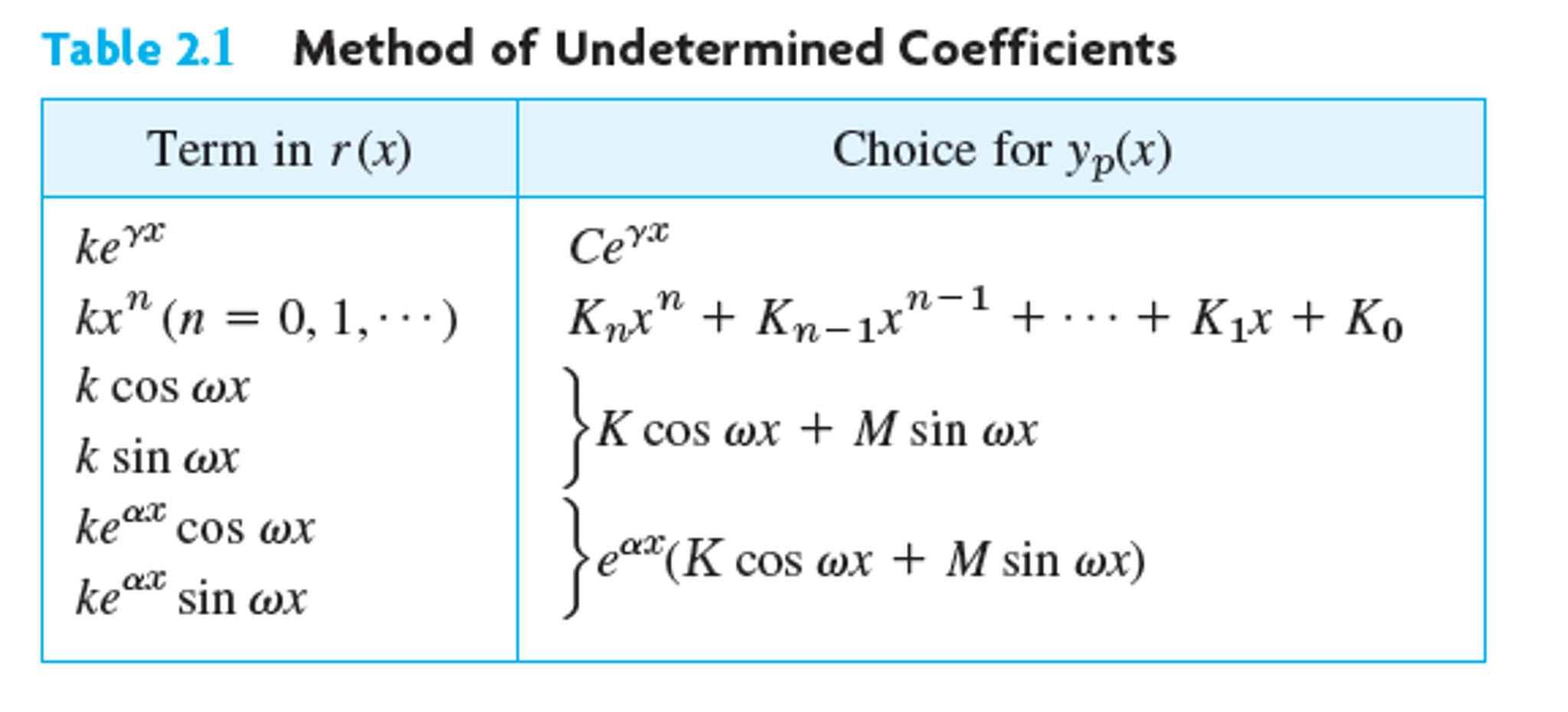METHOD OF UNDETERMINED COEFFICIENTS
This method is used to find a particular solution to a nonhomogeneous differential equation.
One of the main advantages of this method is that it reduces the problem down to an algebra problem. The algebra can get messy on occasion, but for most of the problems it will not be terribly difficult. Another nice thing about this method is that the complementary solution will not be explicitly required, although as we will see knowledge of the complementary solution will be needed in some cases and so we’ll generally find that as well.
FOR REFRENCE , YOU CAN WATCH THE FOLLOWING VIDEOS:
TABLE FOR THE METHOD OF UNDETERMINED COEFFICENTS
If is a particular solution for
and if is a particular solution for
then + is a particular solution for
RULES for solution w.r.t to the table
1. BASIC RULE IF r(x) in eq(1) is one of the function in 1st column of the table , then choose for YP to the corresponding lines to it & determine the undetermined coefficient by substituting deterivates of YP & YP
2. MODIFIED RULEIF a term in YP happens to be solution of the eqn ,then multiply choice of YP by x2 &yx2 if its a double root of the equation.
3. SUM RULEIF r(x)is a sum of the function in 1st column of table,then solution is also YP is sum of the corresponding line of the 2nd columm
EXAMPLES
Example 1 Determine a particular solution to
The point here is to find a particular solution, however the first thing that we’re going to do is find the complementary solution to this differential equation. Recall that the complementary solution comes from solving,
The characteristic equation for this differential equation and its roots are.
The complementary solution is then,
At this point the reason for doing this first will not be apparent, however we want you in the habit of finding it before we start the work to find a particular solution. Eventually, as we’ll see, having the complementary solution in hand will be helpful and so it’s best to be in the habit of finding it first prior to doing the work for undetermined coefficients.
Now, let’s proceed with finding a particular solution. As mentioned prior to the start of this example we need to make a guess as to the form of a particular solution to this differential equation. Since is an exponential and we know that exponentials never just appear or disappear in the differentiation process it seems that a likely form of the particular solution would be
Now, all that we need to do is do a couple of derivatives, plug this into the differential equation and see if we can determine what needs to be.
Plugging into the differential equation gives
So, in order for our guess to be a solution we will need to choose so that the coefficients of the exponentials on either side of the equal sign are the same. In other words we need to choose so that,
Okay, we found a value for the coefficient. This means that we guessed correctly. A particular solution to the differential equation is then,





No comments:
Post a Comment